What's New
Displaying results 3801 - 3810 of 4052
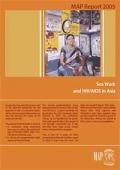
Resource | Publications,
People who buy and sell sex pose one of the high-risk behaviours for HIV exposure in Asia. It is therefore essential for HIV prevention interventions to take into account the nature of the Asian sex industry. The purpose of this booklet is twofold:
1. to summarize what researchers have learned about the epidemiology of HIV/AIDS within Asian commercial sex networks; and,
2. to discuss the programmatic implications of those findings.
This publication follows up by highlighting the points that relate specifically to the spread of HIV through commercial sex. It also describes how those points should inform HIV prevention strategies.
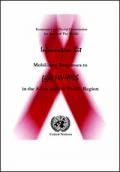
Resource | Tools,
It is now widely accepted that HIV/AIDS is a threat to social and economic development with serious implications not only for the health and well-being of individuals but also for productivity, economic development, the social fabric of communities and national security. HIV/AIDS therefore requires the full commitment of all sectors: public, private and civil society. What might an expanded response to HIV/AIDS, that extends beyond the health sector and calls for the mobilization of all societal resources to combat the disease, look like?
A multisectoral approach to HIV/AIDS aims at mobilizing resources – financial and otherwise. Sector-wide approaches provide opportunities for integrated responses to HIV/AIDS, moving away from the traditional vertical approach that addresses HIV/AIDS as a disease specific (biomedical) or a narrowly-defined problem rather than incorporating poverty, development, nutrition, education and other prevalent factors that may help drive the epidemic.
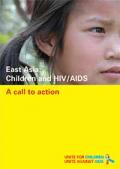
Resource | Publications,
HIV/AIDS has left virtually no country, rich or poor, untouched. The East Asia region is already witnessing some of the world’s fastest growing HIV epidemics. Progress has been made, and leaders are beginning to match words with action. Yet there is much more to be done. Children are the missing face of AIDS, and failure to take account of their critical needs – be it prevention, treatment or care – will undermine the region’s chance of reaching Millennium Development Goals.
The Global Campaign on Children and AIDS seeks to confront these challenges and renew the drive to meet the UNGASS targets as well as those made during the UN Special Session on Children in 2002. By forging a wide-ranging alliance with the governments, international and national partners, along with the civil society, and through leveraging resources, the campaign places children at the heart of the region’s HIV/AIDS response, and thus, contributes to East Asia’s efforts to scale up the response to HIV/AIDS.
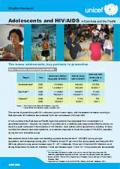
Resource | Publications,
Many countries across the region have developed plans to address HIV/AIDS among young people. Prevention education and provision of youth-friendly health services are already stipulated in national strategies. However, programmes for institutionalized capacity building and sectoral policies in health, education, welfare, labour and social justice that are all vital to implementing and supporting this strategy remain few and far between.
Interventions focused on the most highly vulnerable young people are often said to be the key to slowing or halting the epidemic. However, capacity is clearly inadequate in many countries, and includes an insufficient availability of human and financial resources, as well as a lack of systematic tracking for behavioural trends and risks. Furthermore, social attitudes towards those most at risk, - who are usually already marginalized and discriminated against because of their behaviours, - remain obstacles which hamper effective preventive measures.
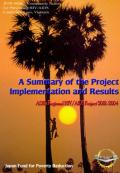
Resource | Publications,
HIV/AIDS is a significant public health problem in all three countries. In Cambodia HIV prevalence rates have fallen from 2.6% to 1.9% among adults aged 15-491, but remain among the highest in the region – with some 123,000 people living with HIV. In Vietnam, while national prevalence is still low, HIV has been reported in all provinces and is relatively high, over 10%, among sex workers and injecting drug users – two key high risk groups. In Laos prevalence is still very low, and is largely confined to the two larger cities (Vientiane and Savannakhet) – yet STD rates among service women are very high in a number of provinces, and Laos’ relatively porous borders with Thailand and Cambodia suggest significant vulnerability.
The goal of the Project was to reduce HIV transmission among mobile groups of people, migrants, and source and host communities in the three countries in order to decrease the impact of the HIV epidemic in the region.
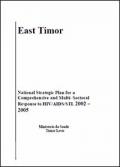
Resource | Publications,
HIV prevention is a priority in building the new nation of East Timor as articulated by the Prime Minister Dr Mari Alkatiri. The Ministry of Health lead the preparation of this first National Strategic Plan for HIV/AIDS/STI Prevention and Care, 2002-2005 for East Timor. The Plan has been developed through an extensive, twelve-month multi- phase consultation process which included inputs from 139 community stakeholders, twelve district-based focus group discussions involving 221 people, international experts, the United Nations theme groups, international NGOs and bilateral donors.
This Strategic Plan for HIV/AIDS/STI covers a three-year span from 2002 to 2005. It provides the strategic content of the HIV component of the National Development Plan and is consistent with the National Health Policy and Plan of East Timor. The plan is developed in the context of challenges of a post-conflict new nation in its Nation-building phase, which requires extensive capacity building, building of social capital, infrastructure and institution development.
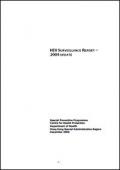
Resource | Publications,
Hong Kong, located in Asia the new burning place of HIV infection, is still having a relatively low prevalence of HIV infection. While sexual transmission is the predominant route of transmission in Hong Kong, an upsurge of infection in injecting drug users is a concern from the experience in other Asian localities. Various public health measures in Hong Kong have kept the HIV prevalence of drug users at low level, as compared with neighbouring cities.
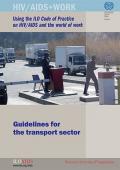
Resource | Guidelines,
The guidelines for the transport sector look at some of the specific problems facing transport – the emphasis is on road transport but consideration is also given to other transport industries. They then present an overview of initiatives that have been taken, first at the legal and policy level then at the workplace, to address the occupational and behavioural risks associated with transport. It incorporates examples of action and guidance based on lessons learnt. It takes the reader through the code of practice and training manual, and shows where transport sector operators and authorities can find relevant provisions, explanations and advice to help them develop and implement HIV/AIDS programmes.
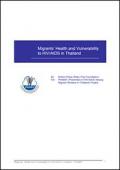
Resource | Publications,
Migrants’ situation in Thailand is precarious. Due to their tenuous legal status and numerous barriers that limit access to health services and legal mechanisms, migrants endure poor working and living conditions without being able to receive full or proper treatment for related health conditions. With a sense of loss of control over their life, and without being able to access health information and services in their own language, migrants’ vulnerability to HIV and other reproductive health conditions increases, as does their susceptibility to contagious diseases and other health problems.
This report reviews the numerous factors that affect migrants’ health in Thailand, exploring work and living conditions, structural barriers to health services, and issues of emotional well-being and human rights. Information is based on informal reporting from the field, which is corroborated by a literature review. The purpose of the report is to show that migrants' health in Thailand is significantly affected by various factors that are out of their control, such as unsanitary work and living conditions and the inability to access health information and services.
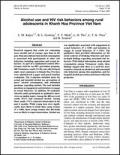
Resource | Publications,
Research suggests that youth are consuming more alcohol and at younger ages than in the past. Data also indicate that alcohol consumption is associated with participation in other risk behaviors including aggression and sexual behaviors. As part of a randomized control effectiveness trial for an HIV prevention program, 480 Vietnamese youth (15–20 years old) living in eight rural communes in Khanh Hoa Province were administered a paper and pencil baseline evaluation. The evaluation included items for actual and intended alcohol use, perceptions of peers’ alcohol consumption, and attitudinal questions regarding alcohol. The tool included questions on engagement and intention to engage in sexual behaviors.





